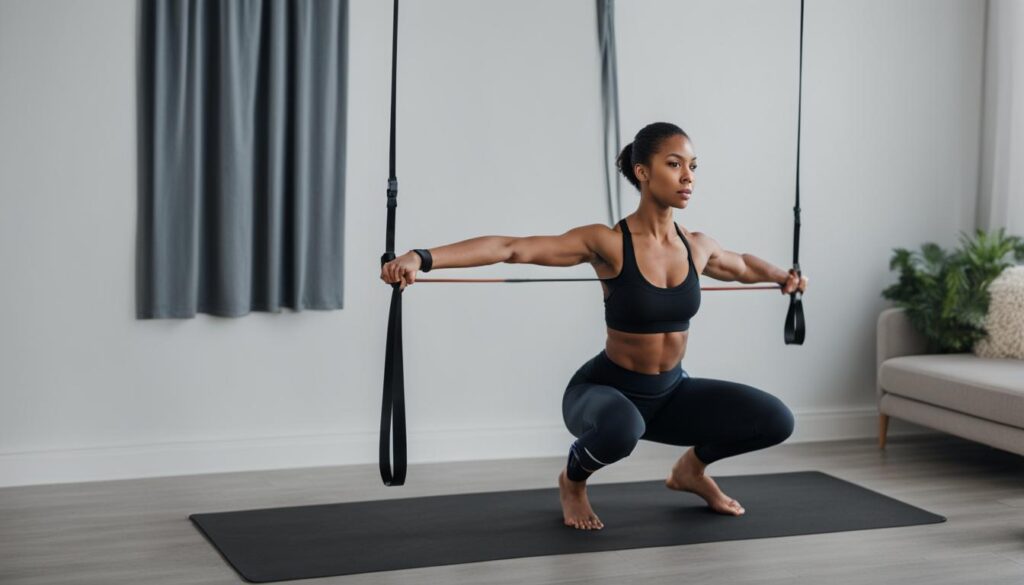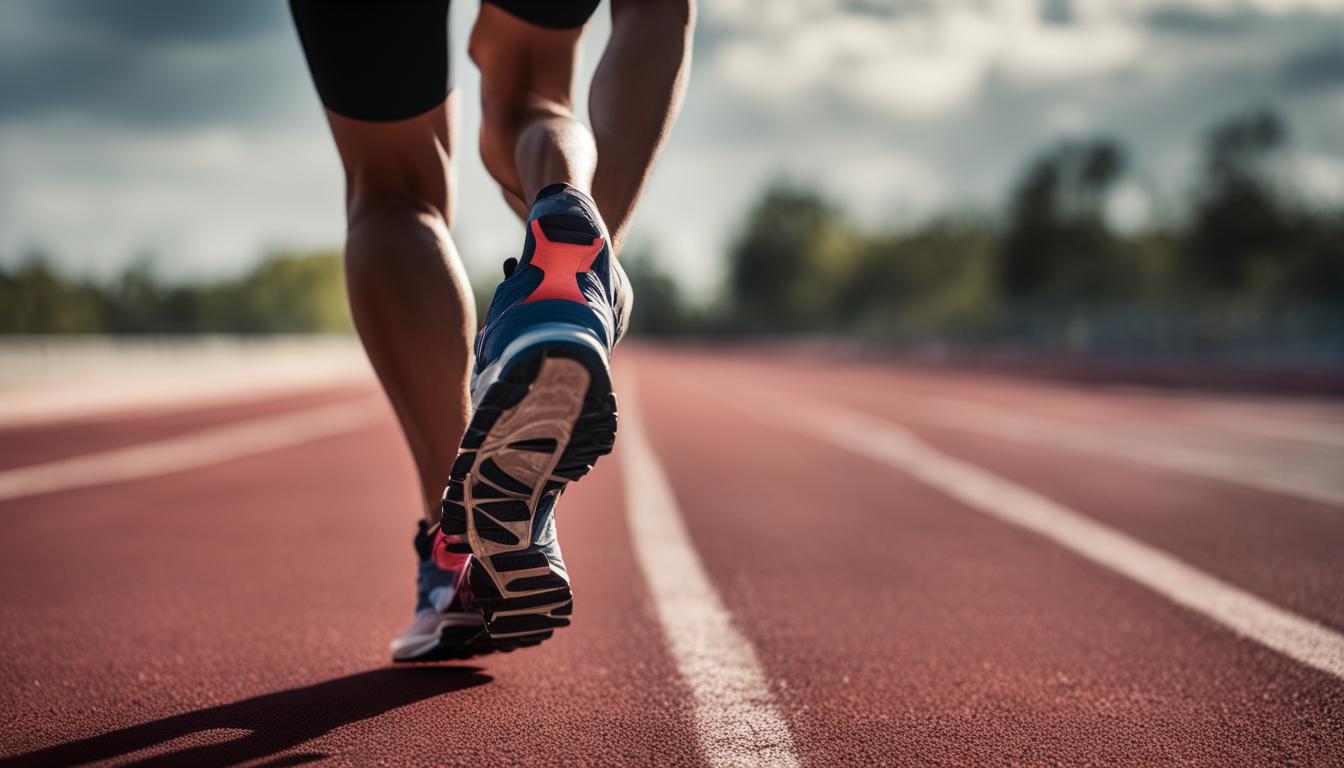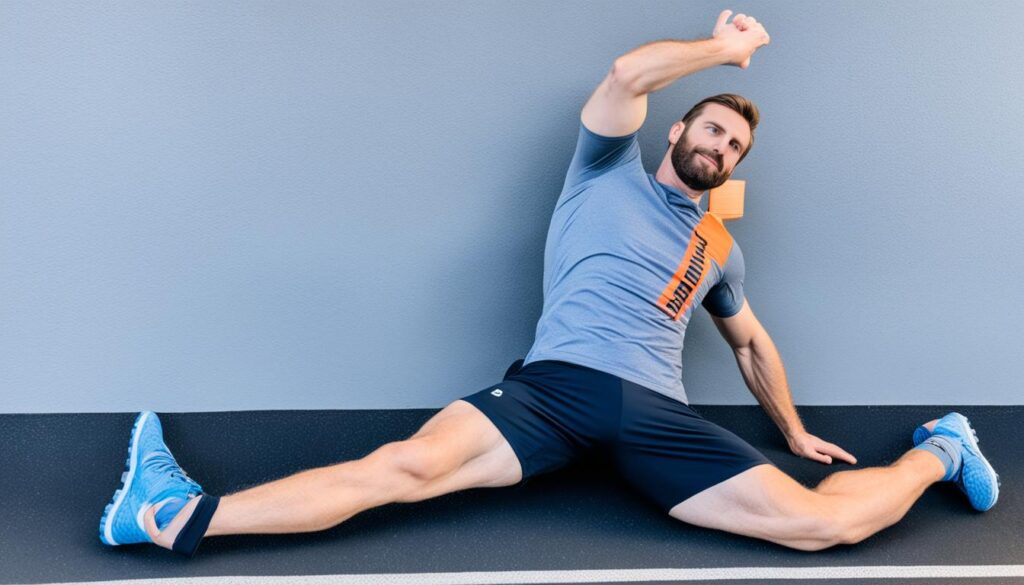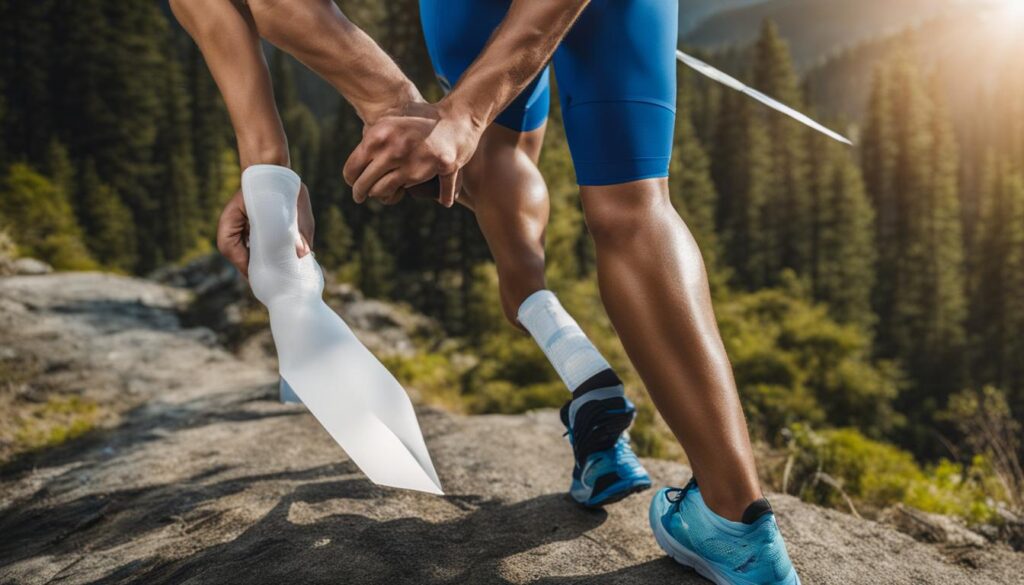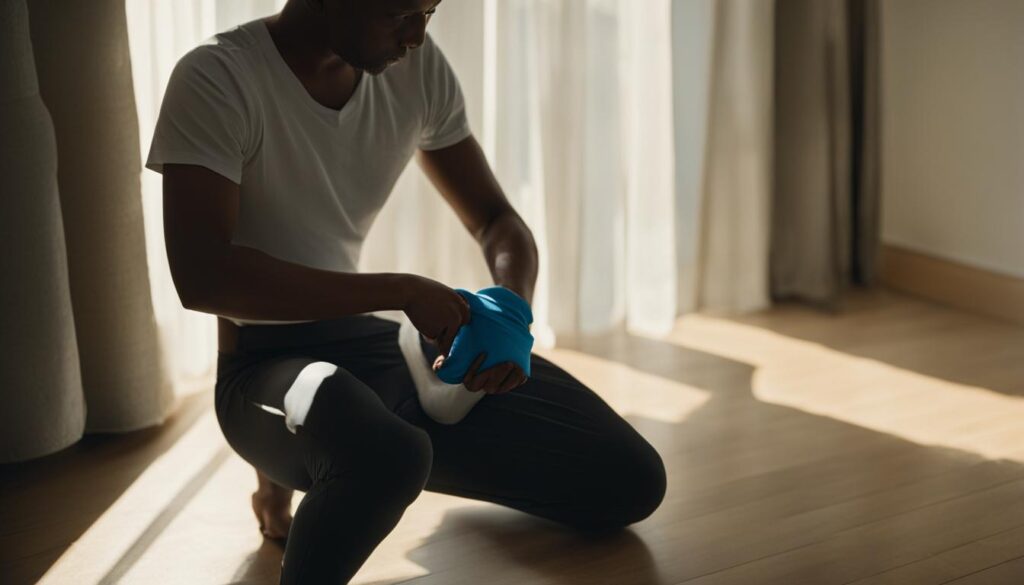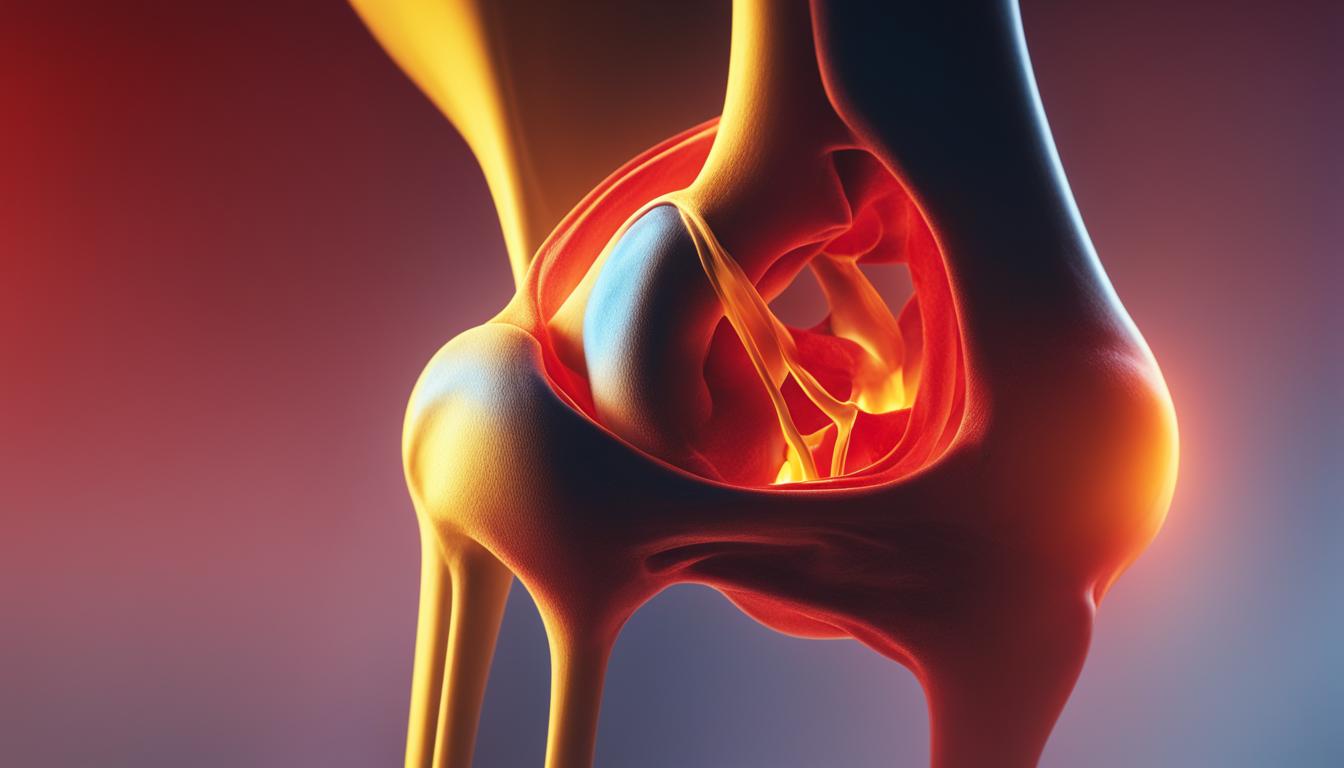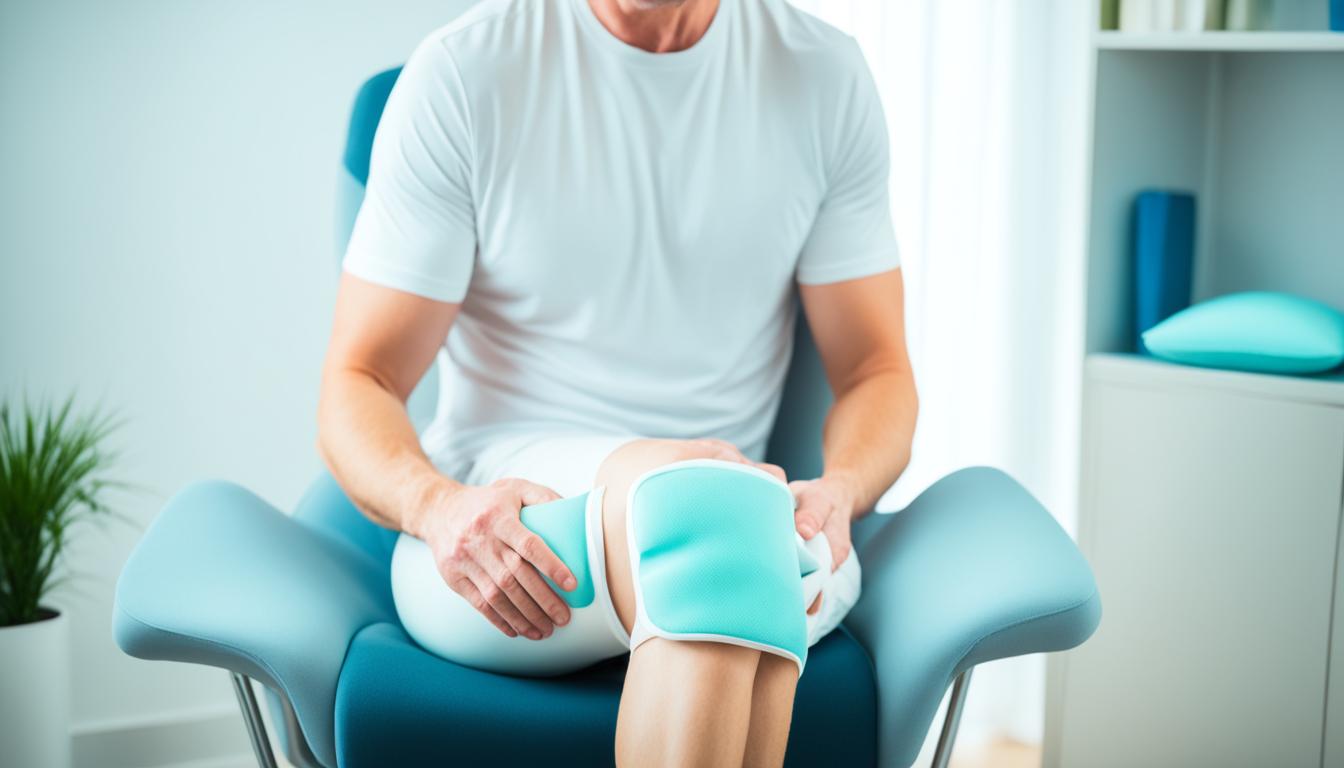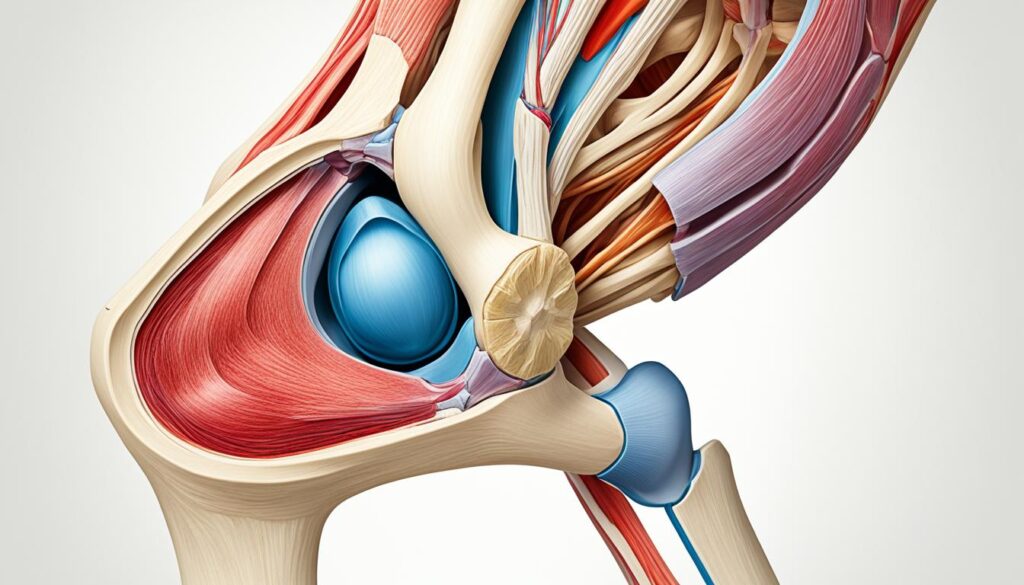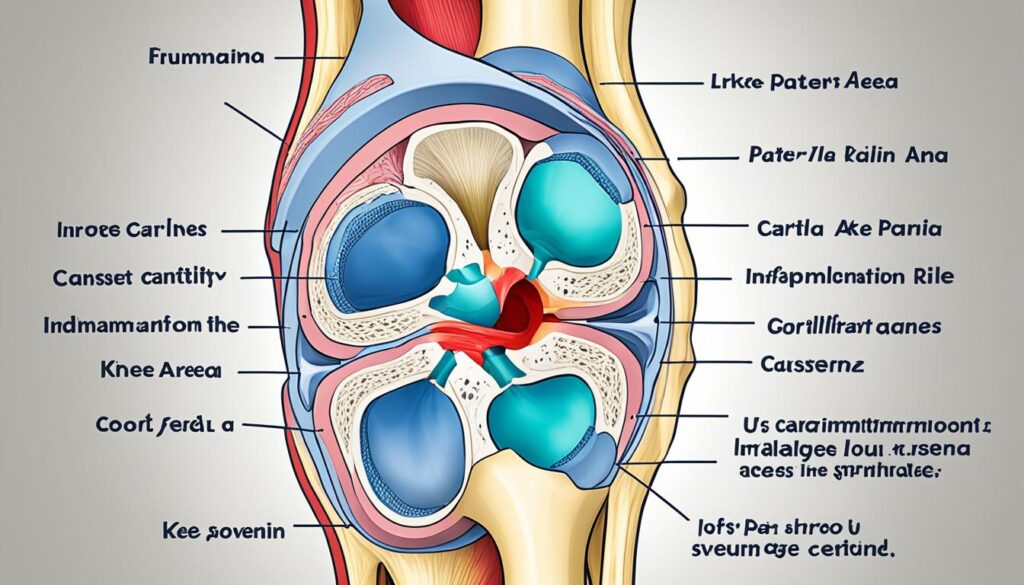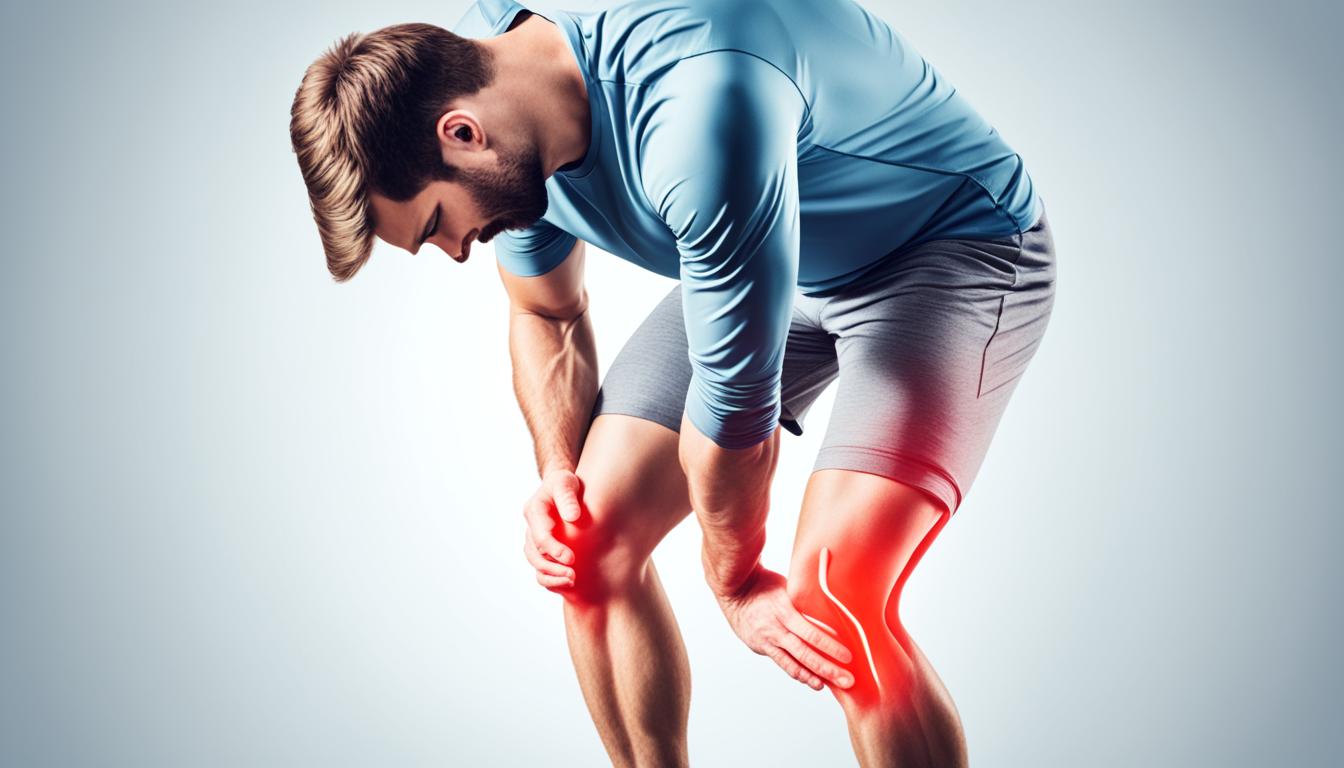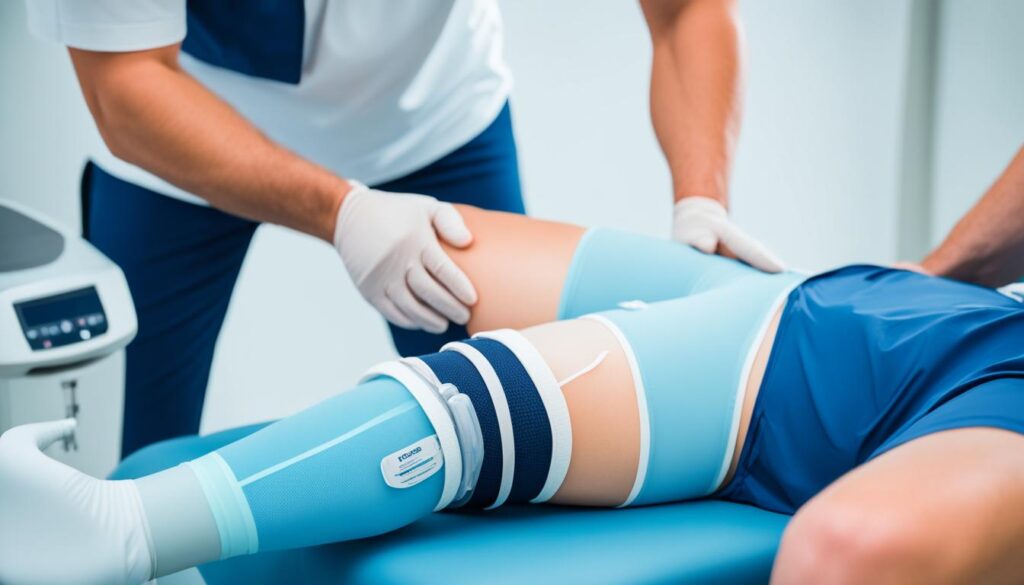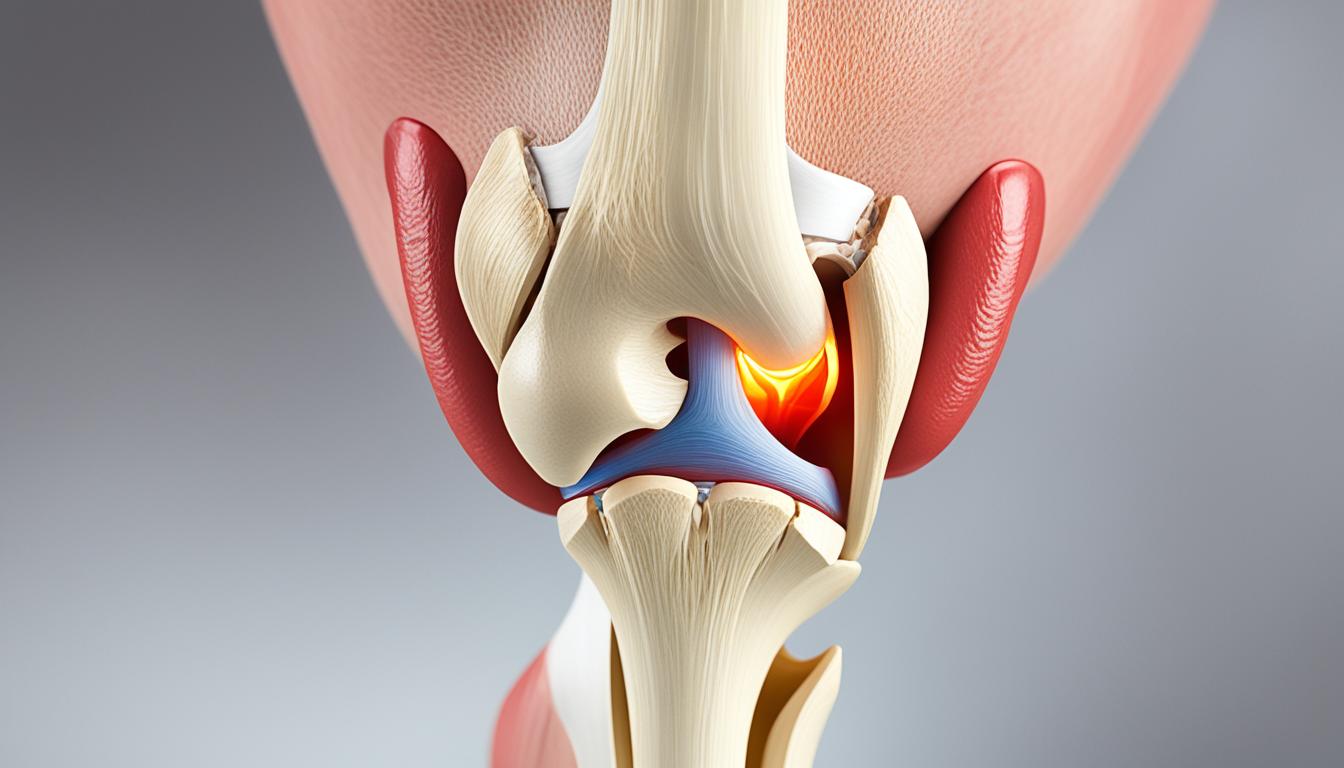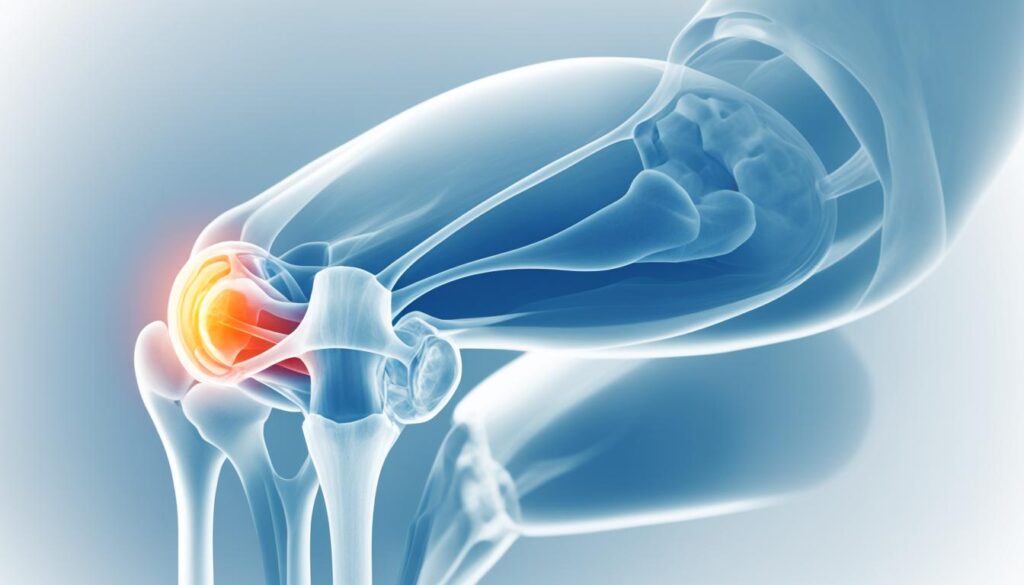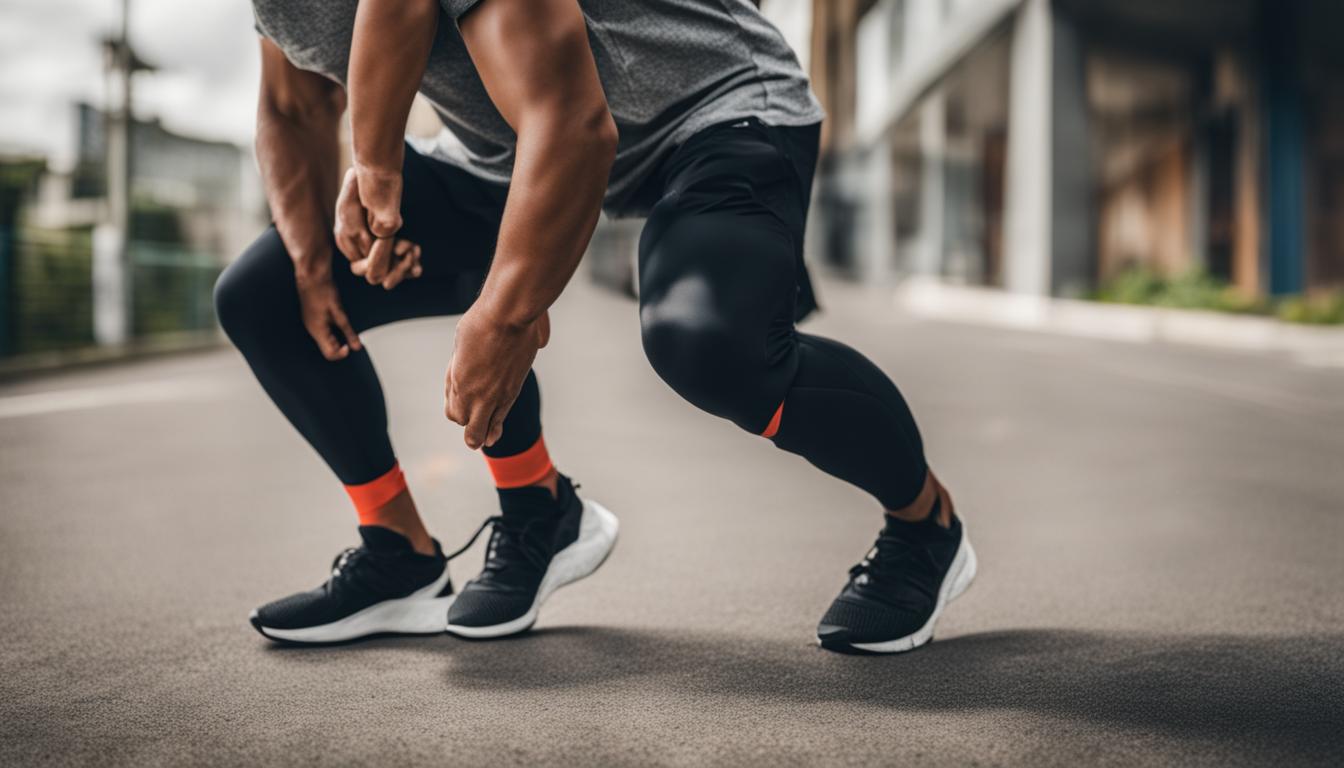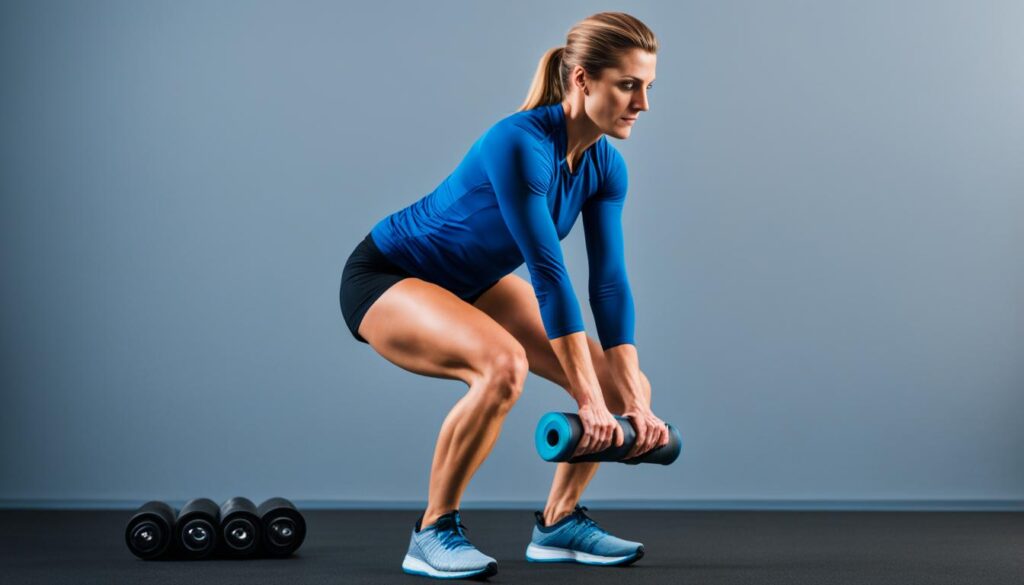If you’ve ever experienced knee pain when walking down stairs, you’re not alone. This common issue affects a significant number of individuals worldwide, causing discomfort and limiting their ability to navigate stairs with ease. In fact, studies show that knee pain when descending stairs is a prevalent problem, with millions of people suffering from this condition on a daily basis.
As we go about our daily activities, the patella (kneecap) slides over the femur (thigh bone) when we bend our legs to go up and down stairs. The cartilage supporting the patella can become damaged, causing the kneecap to slide out of position and triggering pain. Going downstairs exacerbates this issue, as it puts even more pressure on the knees, with a force 3.5 times our body weight exerted on the kneecap. This increased pressure can lead to discomfort and difficulty in descending stairs.
There are several conditions that can cause knee pain when walking down stairs, including knee osteoarthritis, patellofemoral pain syndrome, muscle strain, IT band syndrome, ligament injury, and compensation injury. It’s crucial to address the underlying causes of knee pain and seek appropriate treatment options to reduce inflammation and pain.
Don’t let knee pain hinder your daily activities. In this article, we will explore the various conditions that can cause knee pain when descending stairs and discuss effective treatments to alleviate discomfort. Whether you’re dealing with knee osteoarthritis, patellofemoral pain syndrome, muscle strain, IT band syndrome, ligament injury, or compensation injury, it’s essential to find the right solutions for your unique situation. Let’s delve into the causes, symptoms, and management strategies for knee pain when walking down stairs.
Knee Osteoarthritis
Knee osteoarthritis is a degenerative condition that affects the knee joint. It is characterized by the breakdown of cartilage, leading to irregular bone movement and inadequate cushioning. Knee osteoarthritis is a prevalent condition, accounting for more than 80% of cases of osteoarthritis.
Individuals with knee osteoarthritis may experience symptoms such as knee pain, inflammation, stiffness, and a grinding or clicking sensation in the knee when moving. They may also experience increased pain and stiffness after periods of sitting or lying down.
While there is currently no cure for knee osteoarthritis, there are various treatment options available to manage the symptoms and improve overall knee health. These treatments can be classified into invasive and non-invasive approaches.
Non-invasive treatments for knee osteoarthritis focus on reducing pain and inflammation, improving joint mobility, and enhancing overall functional ability. One effective non-invasive treatment option is AposHealth, which has shown a high satisfaction rate of 96%. AposHealth utilizes a personalized approach by providing a specially designed shoe device that helps redistribute forces throughout the knee joint, providing relief and improving knee function.
“AposHealth has revolutionized the way we approach knee osteoarthritis treatment. Its non-invasive nature, combined with its high patient satisfaction rate, makes it an attractive option for individuals seeking relief from knee pain and improved knee function.”
With the use of AposHealth and other non-invasive treatments, individuals with knee osteoarthritis can experience a reduction in pain, improved joint function, and enhanced quality of life.
Treatment Options for Knee Osteoarthritis
Here is a breakdown of the treatment options for knee osteoarthritis:
| Treatment | Description |
|---|---|
| Non-invasive treatments | – AposHealth: Utilizes a personalized shoe device to redistribute forces throughout the knee joint, reducing pain and improving function. – Physical therapy: Includes exercises to strengthen the muscles around the knee and improve joint stability. – Weight management: Maintaining a healthy weight can reduce stress on the knee joints. – Medications: Over-the-counter pain relievers, such as acetaminophen or nonsteroidal anti-inflammatory drugs (NSAIDs), may help manage pain and inflammation. – Assistive devices: Canes, crutches, or knee braces can provide support and relieve pressure on the knee joint. – Injections: Corticosteroid or hyaluronic acid injections may be used to reduce inflammation and provide temporary pain relief. – Transcutaneous Electrical Nerve Stimulation (TENS): Involves the use of low-voltage electrical currents to reduce pain. – Acupuncture: Involves the insertion of thin needles into specific points on the body to alleviate pain and promote healing. |
| Invasive treatments | – Arthroscopy: Minimally invasive procedure that involves the insertion of a small camera and surgical instruments into the knee joint to repair or remove damaged tissue. – Osteotomy: Involves cutting and realigning the bones around the knee joint to relieve pressure on the damaged area. – Knee replacement surgery: In severe cases, the damaged knee joint is replaced with an artificial joint made of metal or plastic. |
It is important for individuals with knee osteoarthritis to consult with a healthcare professional to determine the most suitable treatment option based on their unique condition and preferences.
Patellofemoral Pain Syndrome
Patellofemoral pain syndrome, also known as jumper’s knee or runner’s knee, is a common cause of knee pain when going down stairs. It occurs when there is irregular movement of the patella, causing damage to the soft tissues around the knee joint.
Chondromalacia patella is a condition that can contribute to patellofemoral pain syndrome, where the cartilage on the underside of the kneecap deteriorates, leading to inflammation and pain.
Other factors that can cause patellofemoral pain when going down stairs include anatomical abnormalities, flat feet, and muscle weakness. Individuals with flat feet may experience misalignment in the knee joint, putting additional stress on the patella. Muscle weakness, particularly in the quadriceps muscles, can also contribute to patellofemoral pain syndrome as it affects the stability of the knee.
In some cases, individuals with anatomical abnormalities may have a patella that doesn’t track properly, causing friction and irritation. This can result in grinding or clicking in the knee when going downstairs.
Patellofemoral pain syndrome can affect individuals of all ages and activity levels. It is important to address the underlying causes of pain and discomfort to prevent further damage and promote healing. Treatment options may include physical therapy, exercises to strengthen the muscles around the knee, footwear modifications, and orthotic inserts to correct biomechanical issues.
“Patellofemoral pain syndrome can be a frustrating and painful condition. It’s important to seek appropriate treatment and work on addressing the underlying causes to alleviate knee pain and improve mobility.” – Dr. Jane Smith, Orthopedic Specialist
In severe cases, when conservative treatments do not provide relief, surgical intervention may be necessary to realign the patella or repair damaged tissues.

Muscle Strain
Minor muscle injuries, including muscle strain, can cause knee pain when going down stairs. While these injuries are usually not serious and can heal with time, when they affect the muscles around the knee, they can lead to pain and discomfort when descending stairs. Rest and appropriate management of the muscle strain are important for recovery and reducing knee pain.
A muscle strain occurs when the muscle fibers are stretched or torn. This can happen due to sudden movements, overexertion, or improper lifting techniques. Prolonged or repetitive activities that strain the muscles can also contribute to muscle strain. Common symptoms of muscle strain include pain, swelling, stiffness, and limited range of motion.
“Muscle strain can cause knee pain when going down stairs due to the increased pressure on the muscles and joints. It is important to rest the affected muscles, apply ice to reduce inflammation, and avoid activities that exacerbate the pain.”
When experiencing knee pain due to muscle strain, it is essential to take the necessary steps to promote healing and prevent further injury. Here are some tips for managing muscle strain and reducing knee pain:
- Rest the affected muscles: Avoid activities that aggravate the pain and allow the muscles time to heal.
- Apply ice: Ice packs can help reduce inflammation and relieve pain. Apply ice for 15-20 minutes several times a day.
- Use compression: Compression bandages or wraps can provide support to the injured muscles and help reduce swelling.
- Elevate the leg: Elevating the leg can help reduce swelling and promote blood flow to the injured area.
- Take over-the-counter pain relievers: Nonsteroidal anti-inflammatory drugs (NSAIDs), such as ibuprofen, can help alleviate pain and reduce inflammation.
- Stretch and strengthen: Once the initial pain and swelling have subsided, gentle stretching and strengthening exercises can help promote healing and prevent future muscle strains.
Preventing Muscle Strain
While muscle strains can sometimes be unavoidable, taking preventive measures can help reduce the risk of injury. Here are some tips to prevent muscle strain:
- Warm-up: Always warm up before engaging in physical activity or exercise to prepare your muscles for the demands of the activity.
- Use proper techniques: Learn and use the correct techniques for lifting heavy objects and performing repetitive motions to avoid unnecessary strain on the muscles.
- Take regular breaks: If your work involves repetitive activities, take regular breaks to allow your muscles time to rest and recover.
- Build strength: Maintain a regular exercise routine that includes strength training exercises to help strengthen your muscles and protect them from injury.
- Listen to your body: Pay attention to any signs of discomfort or pain. If you feel strain or fatigue in your muscles, take a break and rest.
By taking precautions and addressing muscle strain promptly, you can effectively manage knee pain and promote a speedy recovery.

IT Band Syndrome
IT band syndrome is a common injury that affects individuals who frequently engage in repetitive knee-bending activities such as running, biking, or hiking. The iliotibial band (IT band) is a thick tendon that runs from the pelvis to the top of the shin, passing over the side of the knee. When the IT band becomes inflamed, it can result in severe knee pain, particularly when climbing stairs.
Repetitive knee-bending activities such as running, biking, or hiking can cause inflammation in the IT band.
Individuals with IT band syndrome often experience intense knee pain due to the constant friction between the IT band and the underlying structures of the knee. Climbing stairs can exacerbate this pain, as the bending motion places additional strain on the inflamed IT band.
Proper treatment and management techniques are crucial for alleviating knee pain and promoting recovery from IT band syndrome. Physical therapy exercises, stretching routines, and targeted strengthening exercises can help improve the flexibility and strength of the IT band and surrounding muscles. Additionally, using foam rollers or massage therapy techniques can help alleviate tension and reduce inflammation.
Physical therapy exercises and stretching routines can promote flexibility and strength in the IT band, aiding in the management of IT band syndrome.
It is important to rest and avoid activities that aggravate the IT band, allowing it to heal and reduce inflammation. Applying ice to the affected area after activity can help alleviate pain and reduce swelling. In severe cases, a healthcare professional may recommend anti-inflammatory medications or corticosteroid injections to provide temporary relief.
Resting and applying ice to the affected area can help reduce inflammation and alleviate knee pain caused by IT band syndrome.
Remember, early detection and appropriate management are key to preventing the progression of IT band syndrome and minimizing the severity of knee pain. If you experience severe knee pain when climbing stairs or participating in repetitive knee-bending activities, consult with a healthcare professional to receive an accurate diagnosis and develop a personalized treatment plan.
| Symptoms of IT Band Syndrome | Treatment and Management Techniques |
|---|---|
|
|
Table: Symptoms of IT Band Syndrome and Treatment and Management Techniques
Ligament Injury
Injuries to the ligaments, such as ACL and MCL sprains or tears, can be a significant cause of knee pain, especially when climbing stairs. These types of injuries are often the result of sudden twists or impacts that put excessive stress on the knee joint. When the ligaments that connect to the knee are damaged, it can lead to instability, swelling, and discomfort in the affected knee.
Tearing or spraining ligaments is not uncommon in sports or activities that involve quick changes in direction, jumping, or pivoting. These injuries can range from mild strains to severe disruptions of the ligament fibers.
In cases where the ligament injury is severe and other treatment options have been exhausted, surgery may be necessary to repair the damaged ligaments. Surgical interventions for ligament injuries often involve reconstructing the torn or sprained ligament using either autografts (tissue from the patient’s body) or allografts (tissue from a donor).
In addition to surgical intervention, rehabilitation and physical therapy are essential components of the recovery process. These exercises and therapies aim to restore strength, stability, and range of motion in the knee and reduce the risk of further injury.
It is crucial to seek appropriate medical attention and treatment for ligament injuries to promote healing, decrease knee pain, and improve overall knee function. Proper diagnosis and timely management can help individuals regain full mobility and return to their daily activities.
Signs and Symptoms of Ligament Injury
- Knee pain
- Swelling and inflammation
- Instability or a feeling of giving way
- Limited range of motion
- Difficulty walking or bearing weight on the affected knee
Treatment and Rehabilitation for Ligament Injury
The approach to treating a ligament injury will depend on various factors, such as the severity of the injury, the specific ligament involved, and the individual’s overall health. Treatment options may include:
- Rest, ice, compression, and elevation (RICE) to reduce pain and inflammation
- Physical therapy to improve knee strength, stability, and range of motion
- Bracing or taping to provide support and stability to the injured ligament
- Non-steroidal anti-inflammatory drugs (NSAIDs) to manage pain and reduce inflammation
- In severe cases, surgical intervention to repair or reconstruct the damaged ligament
Your healthcare provider will determine the most appropriate treatment plan based on your specific condition and needs. It is essential to follow their guidance and actively participate in the rehabilitation process to achieve optimal recovery.
Compensation Injury
An injury to the foot or ankle can have a significant impact on an individual’s gait and overall walking pattern. When this occurs, it forces the body to compensate in order to maintain balance and mobility. One common consequence of a compensation injury is the altered gait, which can lead to additional stress and strain on the knees.
When descending stairs, the altered gait can result in an increased load on the knees, causing knee pain and discomfort. The knee joints are not designed to handle this excessive pressure and can become inflamed, leading to further pain and limitations in mobility.
Biomechanical intervention is often necessary to correct the altered gait and reduce knee pain. This can involve the use of specialized footwear, orthotic devices, or physical therapy exercises aimed at improving gait mechanics and redistributing forces during walking.
It is crucial to address the underlying foot or ankle injury and seek appropriate treatment to minimize knee pain when going down stairs. By addressing the compensation injury and restoring proper biomechanics, individuals can experience relief from knee pain and improve their overall quality of life.
Biomechanical Intervention for Compensation Injury
| Treatment | Description |
|---|---|
| Specialized Footwear | Shoes designed to provide support, stability, and proper alignment for individuals with altered gait patterns. |
| Orthotic Devices | Custom-made inserts or braces that correct foot and ankle alignment, minimizing the impact on the knees. |
| Physical Therapy | Exercises and stretches that target specific muscle imbalances and improve gait mechanics. |
By integrating biomechanical intervention into the treatment plan, individuals can address the root cause of their knee pain and work towards restoring normal function and reducing discomfort when going down stairs.
Conclusion
Knee pain on stairs can significantly impact our daily activities, making it crucial to seek effective solutions for relief and improved knee health. Understanding the underlying causes of knee pain when descending stairs is the first step towards finding the right management options.
Fortunately, there are several treatment approaches available, ranging from non-invasive methods to supportive aids and biomechanical devices. AposHealth, a non-invasive treatment with a high satisfaction rate, has shown promising results for knee osteoarthritis. It’s essential to consult with a healthcare professional to determine the most suitable course of action for managing knee pain on stairs.
In addition to professional guidance, incorporating strategies such as the RICE method (rest, ice, compression, elevation), over-the-counter medications, weight management, exercise, physical therapy, and supportive aids can significantly contribute to knee pain relief and overall knee health. By adopting a comprehensive approach, we can alleviate pain, reduce inflammation, and improve our ability to navigate stairs with ease.
When it comes to our knee health, proactive management is key. By prioritizing consultation with healthcare professionals and implementing appropriate treatments and self-care practices, we can effectively manage knee pain when descending stairs and maintain optimal knee health for a better quality of life.
FAQ
What causes knee pain when walking down stairs?
Knee pain when walking down stairs can be caused by various conditions such as knee osteoarthritis, patellofemoral pain syndrome, muscle strain, IT band syndrome, ligament injury, and compensation injury.
What is knee osteoarthritis?
Knee osteoarthritis is a degenerative condition characterized by the breakdown of cartilage in the knee joint, resulting in inflammation, pain, stiffness, and grinding or clicking in the knee when moving.
How can knee osteoarthritis be treated?
Knee osteoarthritis can be managed with both invasive and non-invasive treatments. AposHealth is a non-invasive treatment option with a high satisfaction rate of 96%.
What is patellofemoral pain syndrome?
Patellofemoral pain syndrome, also known as jumper’s knee or runner’s knee, is a condition characterized by irregular movement of the patella, causing damage to the soft tissues around the knee joint.
What are the possible causes of patellofemoral pain syndrome?
Patellofemoral pain syndrome can be caused by factors such as chondromalacia patella, anatomical abnormalities, flat feet, and muscle weakness.
Can muscle strain cause knee pain when going down stairs?
Yes, minor muscle injuries such as muscle strain can lead to knee pain when going down stairs. Rest and appropriate management are crucial for recovery.
What is IT band syndrome?
IT band syndrome is an injury caused by repetitive knee-bending activities. It involves inflammation of the iliotibial band, resulting in severe knee pain, especially when climbing stairs.
How serious are ligament injuries?
Ligament injuries, such as ACL and MCL sprains or tears, can be serious and may require surgical intervention. They can cause knee pain when climbing stairs.
What is a compensation injury?
A compensation injury occurs when an injury to the foot or ankle alters an individual’s gait and forces them to put excess load on the knee when going down stairs, resulting in knee pain. Biomechanical intervention may be necessary to correct the altered gait.
What can I do to manage knee pain when walking down stairs?
It is important to address the underlying causes of knee pain and seek appropriate treatment options. This may include non-invasive treatments like AposHealth, as well as utilizing techniques such as RICE (rest, ice, compression, elevation), over-the-counter medications, weight management, exercise and physical therapy, supportive aids, and biomechanical devices.
When should I consult a healthcare professional for knee pain when walking down stairs?
It is recommended to consult with a healthcare professional if you experience persistent or severe knee pain when walking down stairs, as they can provide an accurate diagnosis and recommend appropriate treatment options.



